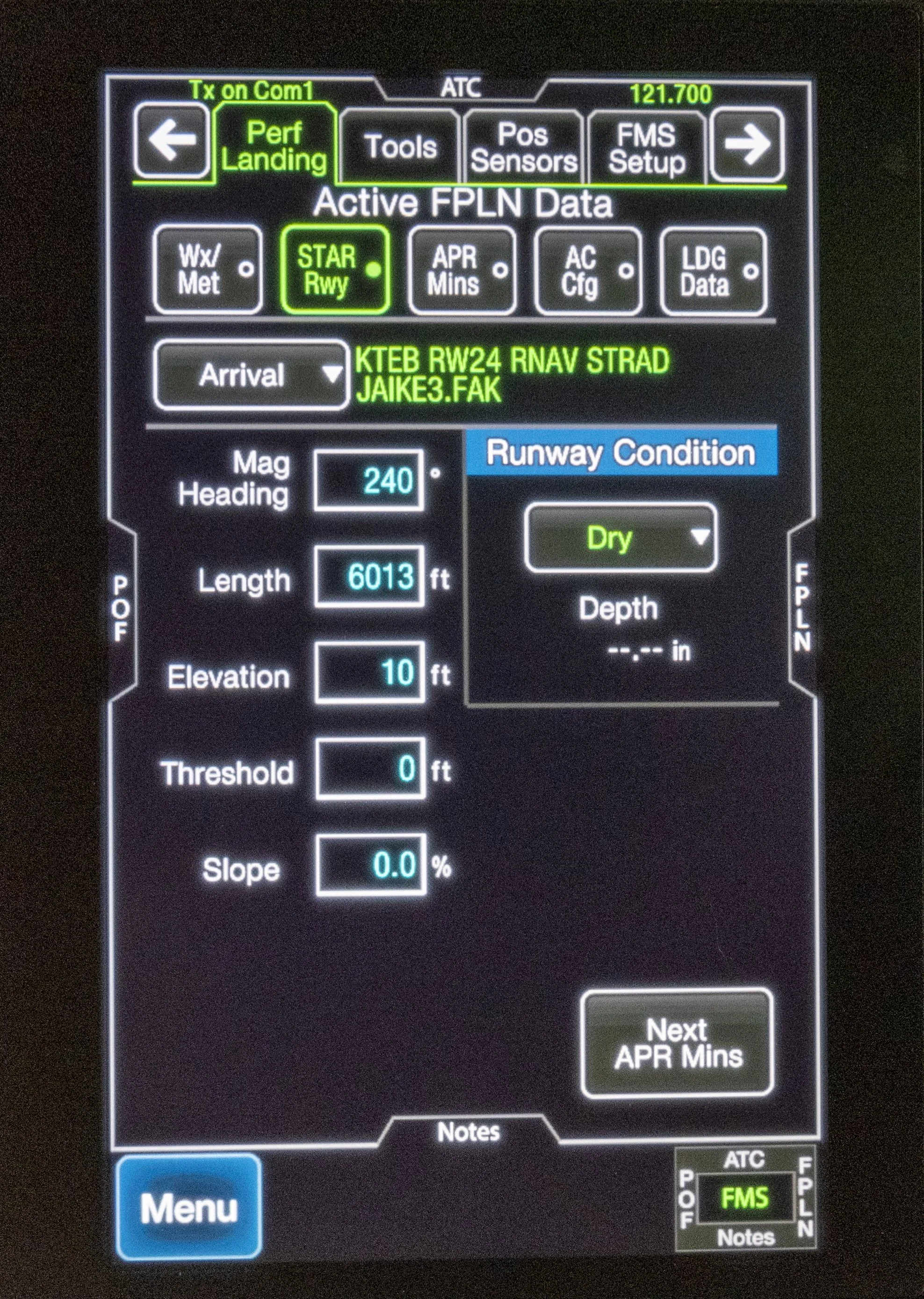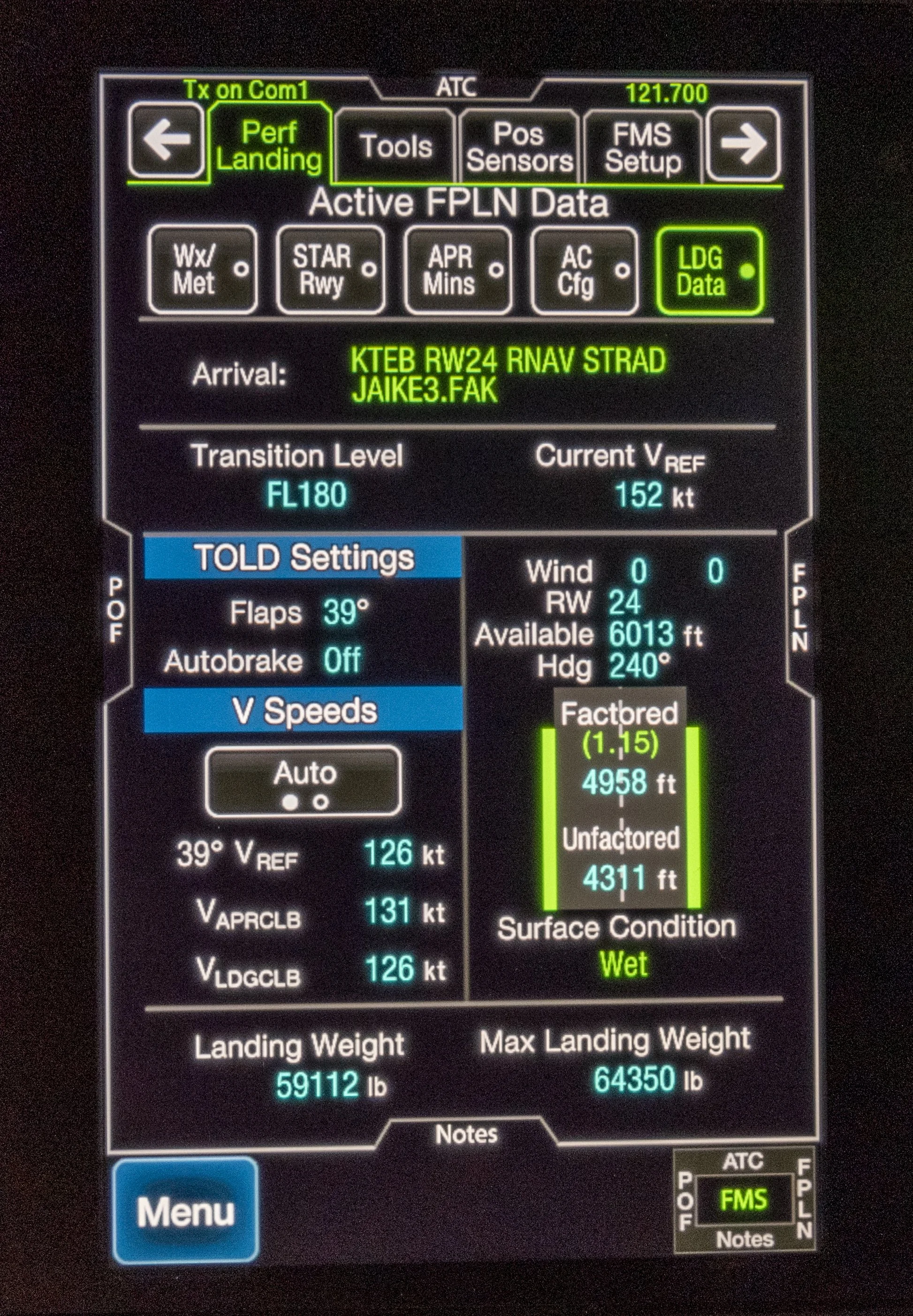GVII Landing Factors
James Albright
Updated: 2021-08-20
You can be forgiven for being confused by which landing factors to apply on the TSC page. Reading through the performance chapter of the AFM leads you to think Gulfstream recommends you use 1.44 as a minimum on a wet runway if you are operating under Part 91 and 1.15 on a dry runway (page 05-11-00) but a recent slide presentation from Gulfstream says 1.29 on a dry runway for a G500, 1.33 on a dry runway for a G600, and 1.15 on a wet runway for both aircraft. What?
The latest revision of that presentation, called “G500/G600 Landing Distance Factors,” was put out 21 June 2021 and contains all the facts you need to know the 1.29 / 1.33 dry and 1.15 wet are the correct answers. But that doesn’t seem to make sense unless you’ve read a lot of background material. But who wants to do that? I think I can explain. At least I’m going to try.
Dry Landing Distance — A Matter of Regulation
When it comes to how manufacturers present dry landing distance in the AFM, the FAA leaves some latitude, but not much.
14 CFR 25 and AC 25-7D
The Federal Aviation Regulation that deals with airworthiness standards in transport category airplanes is 14 CFR 25. Section 25.125 of that regulation appears to provide some structure, but not a lot of guidance. That’s why we have Advisory Circular 25-7D, Flight Test Guide for Certification of Transport Category Airplanes. It gets into a lot of details, but the importance stuff for our purposes here are found in section 4.11:
The landing distance is divided into two parts: the airborne distance from 50 feet to touchdown and the ground distance from touchdown to a stop.
The airborne distance is normally determined by a -3° glide path and a target rate of descent at touchdown that “should not exceed 6 feet per second.
Of course it is more complicated than this and the AC gives a formula to approximate the air distance, but it cannot be determined with the formula alone. It is up to the manufacturer to decide on the descent rate at touchdown and other factors. But once all this is done, the landing data is determined, published, and that’s how it has to be.
The Gulfstream Solution to Actual Landing Distance (Dry)
According to that already mentioned slide presentation, Gulfstream says:
Descent at touchdown: 4 - 6 feet per second.
Air distance: 4 - 5 seconds.
Gulfstream calls this the “performance landing” and it is reflected by the landing distance numbers in the AFM.
A “Mandatory” Recommended Additive
SAFO 19001
After a Boeing 737 overrun accident at Chicago Midway Airport in 2005, the FAA convened a Takeoff and Landing Performance Assessment (TALPA) Aviation Rulemaking Committee and one of the results was Safety Alert for Operators (SAFO) 19001. Among other things, the SAFO said the operational landing distance for a time of arrival should include a safety margin of 15 percent.
The Gulfstream Solution for SAFO 19001
Gulfstream made this mandatory by including it as a limitation in the AFM, Section 01-03-90: “A minimum operational safety factor of 1.15 must be applied to the unfactored landing distance calculated in 05-11-30, Landing Distance.”
Another Additive
That “mandatory” recommended 15% factor appeared to be inadequate when applied to normal pilot landing technique so the TALPA ARC came up with:
AC 25-32 Landing Data for TALPA
Not many pilots are willing to land with a descent rate as high as 8 feet per second, which is permitted in certification. (The GV was certified with just this rate.) AC 25-32 (Section 8.2.5.3) says a range of 1 to 4 feet per second can be used to extend the air distance to 7 seconds. This doesn’t change the certification distance shown in the AFM, but it is up to manufacturers to let us operators know how to apply the change.
The Gulfstream Solution for AC 25-32 TALPA
Gulfstream cannot change the AFM certification data so our dry landing numbers are pretty much set. So Gulfstream tells us that we need an additional additive to our dry runway numbers:
12% additive for the G500
15% additive for the G600
SAFO 19001 says TALPA distances still need the 15% safety factor. You simply multiply 1.12 x 1.15 and 1.15 x 1.15 to get:
1.29 factor for the G500 on a dry runway
1.33 factor for the G600 on a dry runway
What about for a wet runway? Since our wet landing performance data is in the Operating Manual and not the AFM, Gulfstream had the latitude to incorporate TALPA adjustments right into the chart. So the only factor needed for both aircraft is:
1.15 factor for the G500 and G600 on a wet runway
Example Landing Performance
We will use the same setup as in the Gulfstream presentation:
KTEB Runway 24, calm winds, 15°C, 29.92, flaps 39, autobrakes off, anti-ice off, thrust reversers operational, no VREF additive, and gross weight very close at 59,112 lbs. (They used 59,100 in their presentation.)
Along the way we will discover what happens when you press the Mode (Dispatch/Enroute) and Runway Condition (Wet/Dry) buttons.
Weather tab
The conditions shown will be used for each of the following examples.
Runway Condition: Dry
Selecting Dry will pull out your landing distances from the AFM tables.
Selecting a new landing factor
The default landing factor will be something other than 1.15, depending on which Mode you have. The selection of “Dispatch” or “Enroute” only determines which landing factors appear as buttons. You can type in whatever you want. For the purpose of showing the basic numbers, I’ve selected 1.15 here.
LDG Data (Dry Runway, 1.15 factor)
The result is a 3,121’ unfactored distance, 3,589’ factored at 1.15. This checks, since (3121)(1.15) = 3589.
AFM Results
The 3,121’ distance matches the number from the AFM.
LDG Data, (Dry Runway, 1.29 factor)
Changing the factor gives us a longer landing distance. This is the recommended solution on a dry runway.
Changing Runway Condition to Wet
Selecting a Wet runway condition changes the unfactored distance from the AFM to the AOM, which includes the TALPA 12% (G500) and 15% (G600).
Incorrect landing factor
Selecting a wet runway condition may also change your landing factor to something you don’t want. The correct factor to select for a wet runway is 1.15.
LDG Data (Wet Runway, 1.15 factor)
The unfactored distance of 4,311’ comes from the AOM and the 1.15 factor gives us 4,958’ to use as our wet runway landing distance.
AOM Landing Performance (Wet Runway)
The AOM number matches the unfactored landing distance on a wet runway result.











